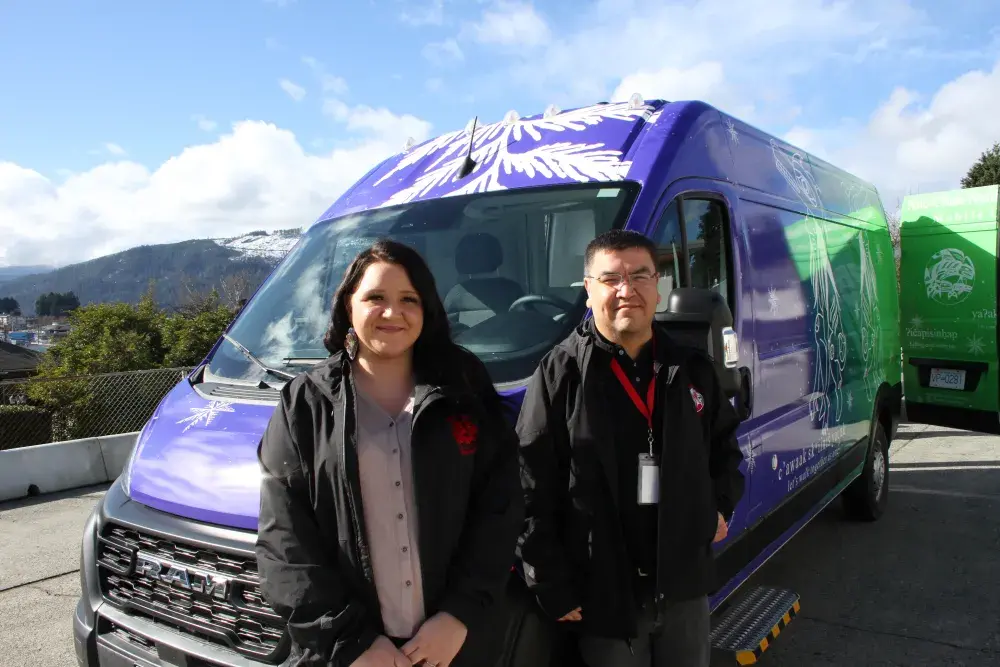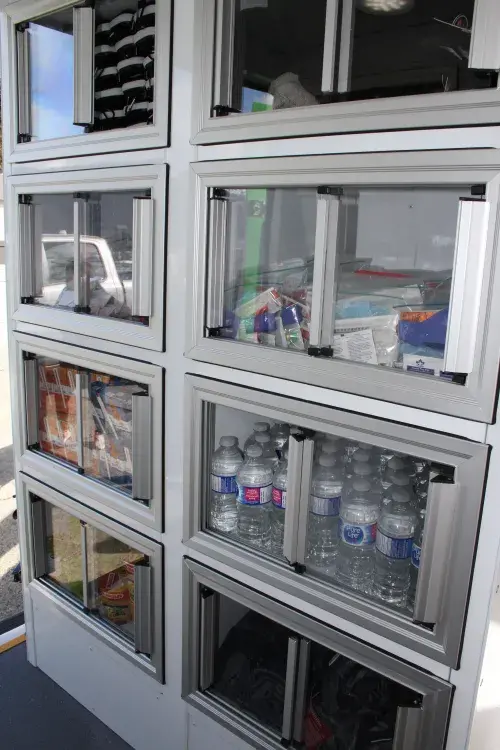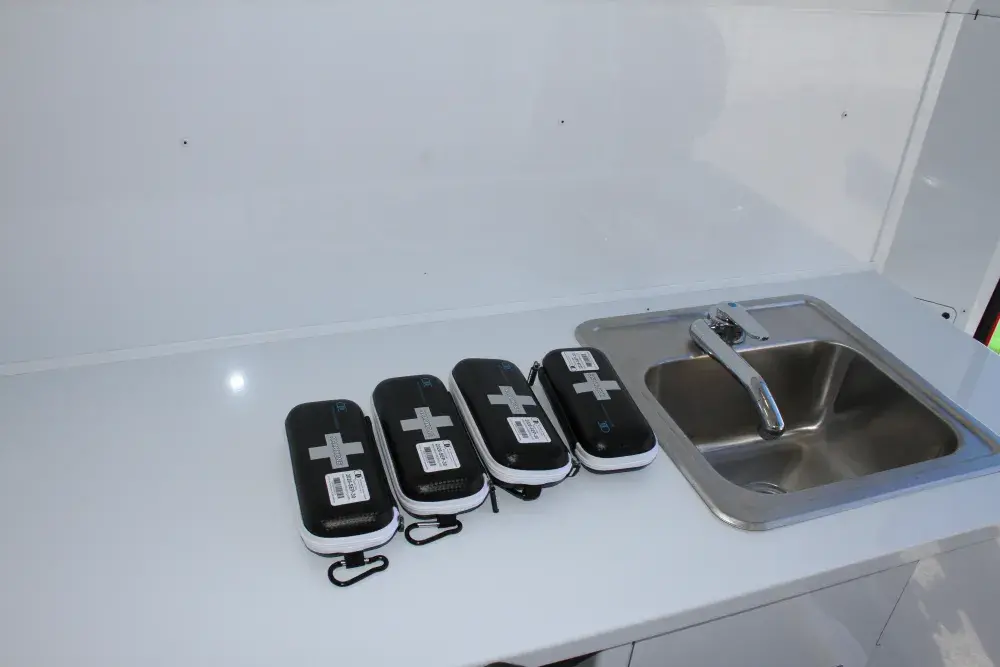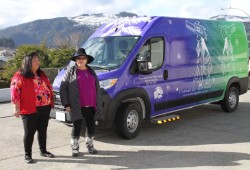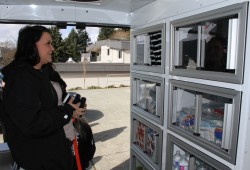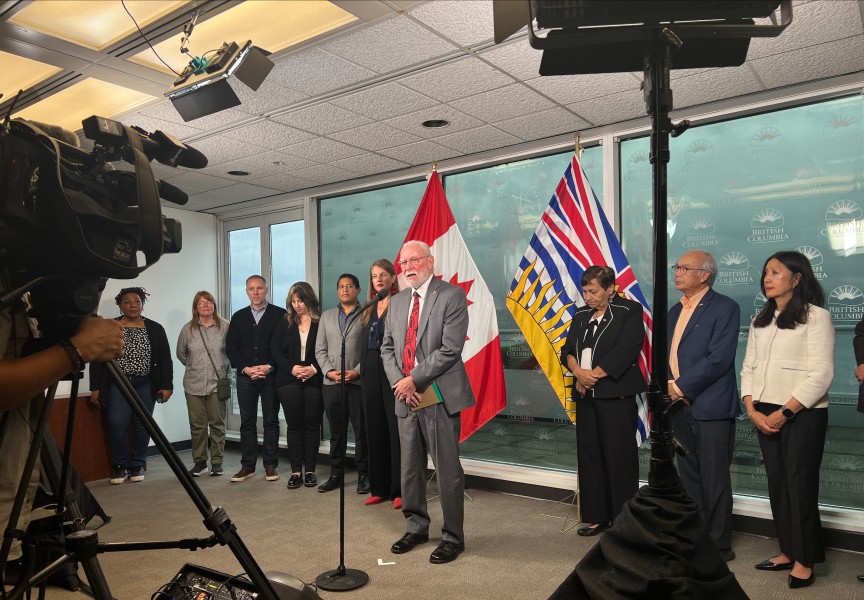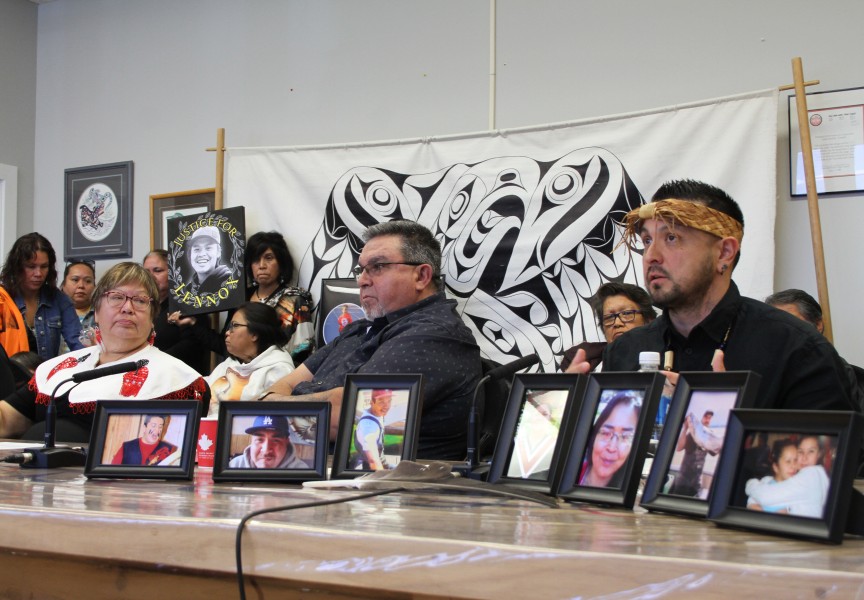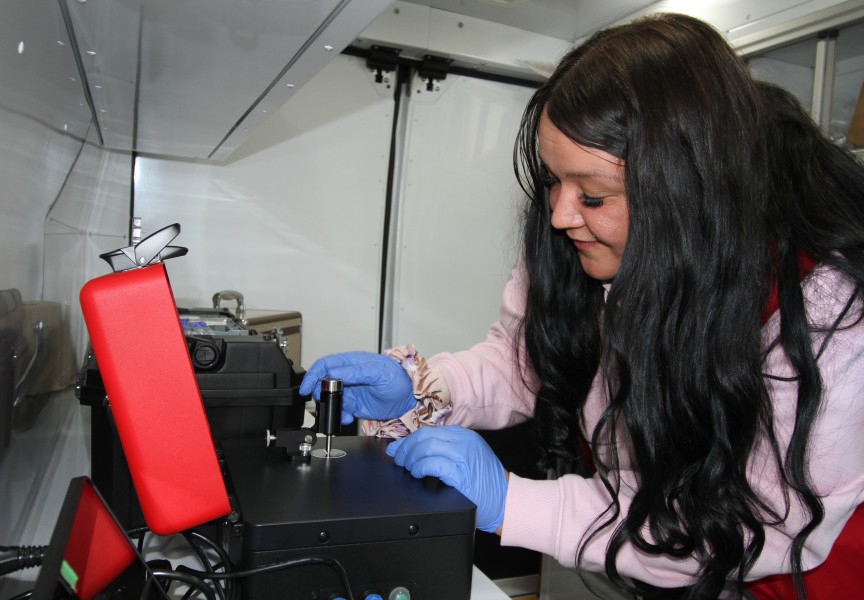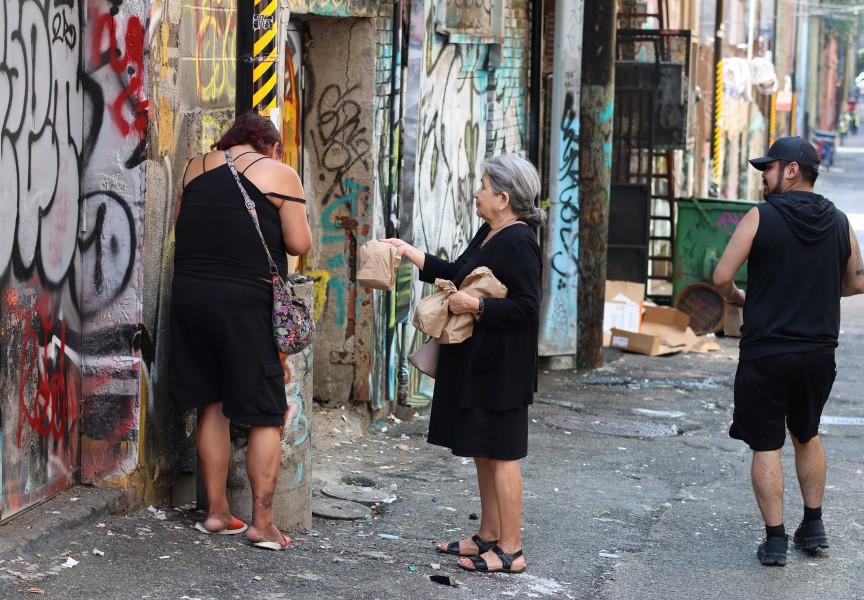Help is coming to the streets of some Vancouver Island cities, with the latest effort to save Nuu-chah-nulth people from the harms of drug use.
Today the Nuu-chah-nulth Tribal Council’s Teechuktl department presented its harm reduction van, which will be offering regular assistance to drug users on the streets of Port Alberni, Nanaimo, Campbell River and Tofino. With the aim of improving the safety of Nuu-chah-nulth members who use illicit drugs, the large van will be operated by two staff who specialize in harm reduction measures. The van contains a large supply of Naloxone kits as well as “safe supply” packages containing items like clean syringes and smoking pipes to prevent the spread of infection by users sharing equipment. The harm reduction van also offers food, blankets and a tent as part of its support.
Sanne van Vlerken, manager of Teechuktl Services, hopes that the van can connect illicit drugs users with helpful services that lead to better health.
Those who are struggling with homelessness are particularly at risk, and a large proportion of this group has identified as being Indigenous. According to Port Alberni’s Point-In-Time Homeless count from last year, 66 per cent of those experiencing homelessness reported Aboriginal descent.
“They’re living on the streets - that’s their lifestyle - so we want to meet them where they’re at,” said van Vlerken. “Then we can expand their network to other supports if they would like it, referrals to counsellors, seeing a nurse. There’s some wound care that can happen as well related to the vulnerable lifestyle that they live.”
The van will be operated by Darrell Ross and Brianna Rai, Teechuktl’s two current harm reduction workers. Rai is trained to treat wounds from the van, something that is needed among illicit drugs users who are reluctant to seek medical attention at the hospital. Teechuktl also plans to eventually have NTC nurses available in the vehicle.
“They don’t want to go to the hospital,” said Rai of illicit drug users. “They don’t get treated very nicely, so they have a cut or something and it spreads into infecting the whole body. They can’t keep it clean.”
Access to medical care is one of the many barriers illicit drugs users face, something that Rai said she sees every day.
“If I phone an ambulance, half the time they talk the client out of going to the hospital, because they know how they’re treated,” said Rai. “They’ll help them in the back of the ambulance and let them go.”
It’s one part of a complex crisis that has continued for years in B.C. with no sign of abating. With 2,511 fatalities due to toxic drugs, last year saw more deaths than ever. Fentanyl was detected in 85 per cent of fatal overdoses in 2023. The current rate of over six per day is twice what the province faced in April 2016 when the opioid crisis was first declared a public health emergency. The First Nations Health Authority has reported that Indigenous people have a fatality rate five times that of other people in British Columbia.
With 37 fatal overdoses last year, the issue has been especially prevalent in Port Alberni. The Alberni-Clayoquot health area, which includes Port Alberni and Tofino, saw a fatality rate of more than twice the provincial average, a regional crisis that has gotten the attention of health authorities.
The harm reduction van is being funded by over $900,000 over the next two years from the First Nations Health Authority, which will cover the cost of the vehicle, its workers and operations. Teechuktl is also expecting to introduce laundry and shower facilities in the coming months at its Redford Street location in Port Alberni.
NTC President Judith Sayers has been watching the van project develop for years as funding was sought to help those at the highest risk of harm from illicit drug use.
“When they see this on the streets, I hope that they’ll get excited and know that help is on the way,” said Sayers when the van was presented outside Teechuktl’s main office on a sunny and brisk March 4 morning. “We have to feed our people mentally, emotionally and spiritually for the health of everyone.”
The van is covered with artwork by Kerry Erickson from the Hesquiaht First Nation. Cedar boughs on the vehicle symbolize strength and protection for the harm reduction workers, dancers wearing sea serpent head pieces sit with their backs to each other, while on the other side hummingbirds that stay in the region throughout the winter indicate how assistance from the vehicle will endure throughout the year.
Leonard Manson of the Tla-o-qui-aht First Nation spoke about the van as tears ran down his cheeks. He’s lost family members to drug overdoses, and still sees deaths regularly.
“This is really going to open a lot of peoples’ eyes,” said Manson, who hopes that the vehicle’s services will empower illicit drug users. “I feel that they’re stuck.”
“Drug use is a sign of an underlying pain,” said van Vlerken. “The addiction is what they’re using to cope with the pain.”
Manson isn’t a drug user, but struggled with alcoholism when he was a young man. He sees similarities in how narcotics are affecting Nuu-chah-nulth people today.
“Today you’re surrounded by street drugs,” he said. “It starts with homelessness, because they have nowhere to turn to.”
In an effort to reduce barriers for illicit users, B.C. was granted an exemption under Canada’s Controlled Drugs and Substances Act on Jan. 31, 2023, which decriminalized small amounts of narcotics in the province. But last year still ended up being the deadliest yet for B.C., and the latest statistics from the B.C. Coroners Service show almost 200 deaths in January, amounting to an average of 6.4 a day.
After these numbers came out Jennifer Whiteside, B.C.’s minister of Mental Health and Addictions, stressed the province’s commitment to the crisis with $117 million for “mental health and substance-use services” as part of this year’s budget, which is in addition to the $1 billion over three years that was announced in 2023.
But putting money into the crisis will not necessarily open up support for who at the highest risk, cautioned Rai.
“There are so many barriers for everything, and they are in such a bad condition in their life that they don’t want to follow the rules,” she said, noting the problems with the institutional setting of a shelter or another publicly funded facility. “They’re addicted to drugs, they don’t want to be locked in from 9 o’clock at night until 9 in the morning. That’s the problem, there’s beds available and people aren’t using them for those reasons. Too many barriers.”
Meanwhile, a medically staffed detox centre remains at the top of the list for the Alberni Valley. This was prioritized as part of a plan presented by theTseshaht First Nation in partnership with Port Alberni’s Community Action Team and Kuu-us Crisis Line Society on Jan. 31.
“Those withdrawal symptoms and that experience, that’s what’s hard, that’s what will make a person go back to using drugs, and that’s what’s hard for family members and friends to witness,” said van Vlerken of the need for a detox centre. “When the person is ready to detox, it’s now, it’s right now. It’s not tomorrow, it’s not next week or three weeks from now, it’s now.”

